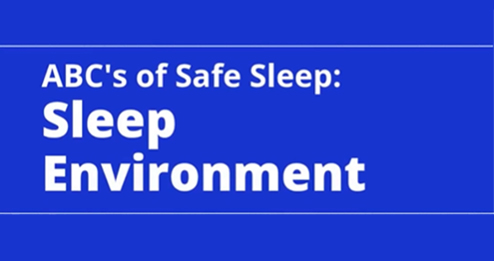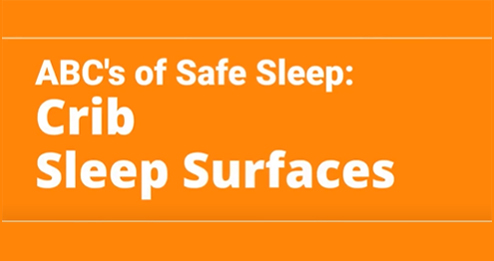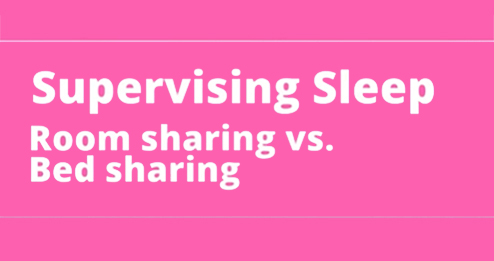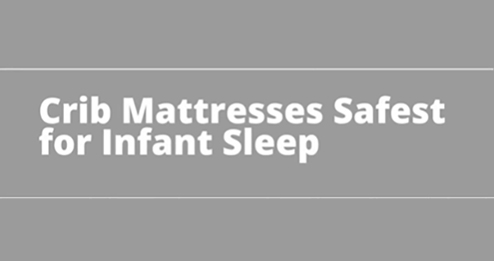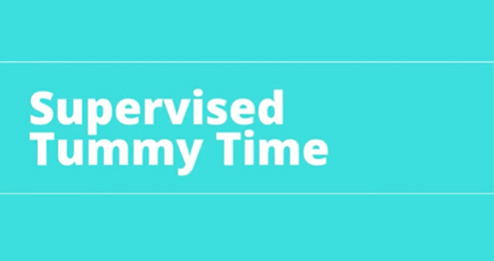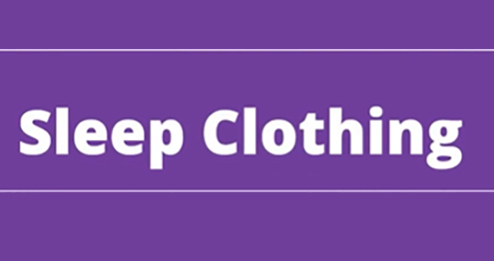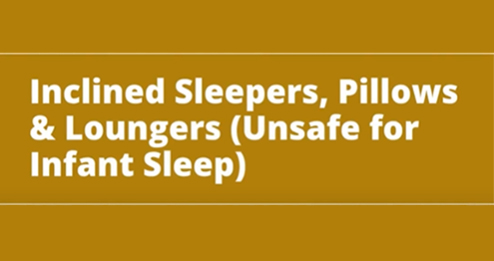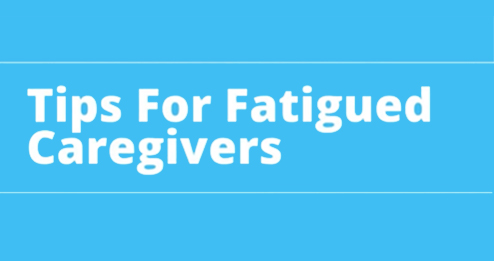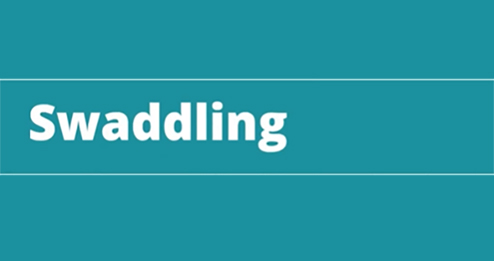
 Administration for Children's Services311
Administration for Children's Services311 Search all NYC.gov websites
Search all NYC.gov websites
Safe Sleep for Infants

Caring for an infant can be hard for parents and caregivers. When infants wake up often or fuss during the night, no one gets any sleep. When you're tired it may seem easier to bring your infant to bed, but sharing a sleep surface (for example, a bed, sofa or chair) with your infant can be dangerous.
Every year, between 30 and 40 infants in New York City die from a preventable, sleep-related injury due to unsafe sleep practices such as stomach sleeping and bed sharing. A sleep-related injury death is the sudden death of an infant less than one year old that occurs because of where and/or how they were placed to sleep. Most sleep-related infant injury deaths are preventable.
All babies, from birth to 12 months old, are at risk for sleep-related injury deaths. However, infants between one and four months old are at the greatest risk. Around this age, neck muscles are still very weak, and it is hard for infants to move out of dangerous situations. Infants also start trying to roll over during this time but cannot do it well on their own. Following safe sleep guidelines will keep infants safe and give you peace of mind.
Sleep-related infant injury death is not the same as Sudden Infant Death Syndrome (SIDS) or "crib death." SIDS is the natural death of a baby that cannot be explained after a careful medical review of the case. Unlike SIDS, sleep-related infant injury deaths are preventable.
Safe Sleep Tips
Safe Sleep means putting an infant to sleep in ways that can help protect him/her from dangers, like choking or not being able to breathe. There are several ways to reduce the risk of a sleep-related injury.
Remember the ABC's of Safe Sleep! Infants should always sleep Alone, on their Backs, and in a Crib or other flat surface. See more tips below:
- Back to sleep for every sleep. To reduce the risk of sleep-related death, it is recommended that infants be placed for sleep in a supine (back) position for every sleep by every caregiver until the child reaches 1 year of age. Side sleeping is not safe and is not advised.
- Use a firm, flat, non-inclined sleep surface to reduce the risk of suffocation or wedging/entrapment.
- Feeding of human milk is recommended, as it is associated with a reduced risk of SIDS.
- It is recommended that infants sleep in the parents' room, close to the parents' bed, but on a separate surface designed for infants, ideally for at least the first 6 months. There is evidence that sleeping in the parents' room but on a separate surface decreases the risk of SIDS by as much as 50%. In addition, this arrangement is most likely to prevent suffocation, strangulation, and entrapment that may occur when the infant is sleeping in the adult bed.
- Keep soft objects, such as pillows, pillow-like toys, quilts, comforters, mattress toppers, fur-like materials, and loose bedding, such as blankets and nonfitted sheets, away from the infant's sleep area to reduce the risk of SIDS, suffocation, entrapment/wedging, and strangulation.
- Cold weather tips: Instead of loose blankets, use a wearable blanket or sleep sack, footed pajamas, or an extra layer of infant clothing to keep your baby warm. If you have heating problems in your home and your landlord hasn't fixed them, call 311. Never put a hat on an infant indoors or share your bed with an infant for warmth.
- Offering a pacifier at nap time and bedtime is recommended to reduce the risk of SIDS.
- Avoid smoke and nicotine exposure during pregnancy and after birth. Both smoking by pregnant people and smoke in the infant's environment after birth are major risk factors for SIDS. Pregnant people are advised not to smoke during pregnancy or after the infant's birth. It is also advised that no one smoke near pregnant people or infants.
- Avoid alcohol, marijuana, opioids, and illicit drug use during pregnancy and after birth. There is an increased risk of SIDS with prenatal and postnatal exposure to alcohol or drug use.
- Avoid overheating and head covering in infants.
- It is recommended that pregnant people obtain regular prenatal care. There is substantial evidence linking a lower risk of SIDS for infants when there has been regular prenatal care.
- Supervised, awake tummy time is recommended to facilitate infant development. Parents are encouraged to place the infant in tummy time while awake and supervised for short periods of time beginning soon after hospital discharge, increasing incrementally to at least 15 to 30 minutes total daily by 7 weeks of age.
Seasonal Tips
- Cold weather tips: Instead of loose blankets, use a wearable blanket or sleep sack, footed pajamas, or an extra layer of infant clothing to keep your baby warm. If you have heating problems in your home and your landlord hasn't fixed them, call 311. Never put a hat on an infant indoors or share your bed with an infant for warmth.
The NYC Infant Safe Sleep Initiative
The NYC Infant Safe Sleep Initiative, launched in 2015, aims to prevent sleep-related infant injury deaths and address long-standing disparities to promote and protect the health and well-being of our youngest and most vulnerable New Yorkers. Black families are twice as likely to have their baby die before their first birthday than white families and infants living in the Bronx and Brooklyn die at higher rates than other boroughs in the first year of life. The Initiative's primary prevention focus, collaborations and partnerships aim to achieve equity in infant survival and close the black/white infant mortality gap by empowering communities with the highest rates of sleep-related infant injury deaths.
ACS provides free education and resources to help parents and caregivers of babies, child welfare professionals, clinicians, and advocates understand the risks and avoid preventable sleep-related infant fatalities. Our citywide public awareness campaigns, outreach activities, and free training, information and resources educate New Yorkers about potentially fatal practices like bed-sharing or stomach sleeping to ensure all children have a healthy, safe start in life and no family suffers the devastating loss of a child during sleep.
Safe Sleep Trainings
ACS offers free, in-person and virtual educational workshops led by expert Injury Prevention Coordinators to increase awareness about the potentially fatal risks associated with unsafe sleep practices. Our interactive workshops include facilitated discussions about the most up-to-date infant safe sleep recommendations from the American Academy of Pediatrics (AAP) for diverse audiences, including caregivers of infants and child-serving professionals.
Training for Caregivers of Infants
This interactive workshop guides parents and caregivers on how to create a safe sleep environment for infants. A facilitated discussion and presentation supports infant caregivers to adopt safe sleep practices and includes:
- An exploration of historical family practices, cultural beliefs, and housing quality concerns (i.e., limited space, poor heating, and vermin) that may pose barriers to adopting safe sleep recommendations,
- Peer-to-peer support and learning that fosters brainstorming solutions to address barriers,
- Stress-reduction techniques and practical solutions to address caregiver overwhelm,
- Tips and strategies to guide parents on how to open dialogues with grandparents, babysitters and other caregivers about the risks associated with unsafe sleep practices for the babies in their care,
- A crib demonstration that provides visual and hands-on instruction that clarifies the practical aspects of safe sleep recommendations, like placing babies on their backs and avoiding soft bedding, making them easier to understand and remember.
At the conclusion of the workshop, caregivers of infants receive Safe Sleep resources, including a brochure and video, “The How and Why of Safe Sleep,” which addresses the reasons why parents should follow the ABCs of safe sleep to eliminate risk factors that are associated with sleep-related infant injury deaths.
Trainings for Child-Serving Professionals
Interactive and presentation training for child-serving professionals include:
• The most recent citywide data on sleep-related infant injury deaths,
• Exploration of the values any barriers (i.e., historical family practices, cultural beliefs, housing quality concerns such as lack of heat and pest infestations) that may interfere with a family’s ability to adopt safe sleep practices,
• Role-play exercises that provide tips for leading a strengths-based conversation with caregivers that build trust, address resistance, and help families understand the life-saving importance of adopting safe sleep practices.
Safe Sleep eLearning Course
Developed in partnership with the ACS Workforce Institute, the Safe Sleep eLearning Course is accessible on Cornerstone for ACS and provider agency staff. The interactive, two-module training is designed to:
- Dispel common myths and misconceptions about infant sleep
- Identify the behaviors that may contribute to seep-related injury deaths
- Establish and practice Safe Sleep habits
- Lead a strengths-based conversation with parents and caregivers around implementing infant safe sleep practices
Learn more about the Safe Sleep eLearning Program and register through the ACS Workforce Institute.
You may also request a Safe Sleep Training from our staff.
Safe Sleep Summit
Educational Materials
Watch our Infant Safe Sleep Guidance video series:
- Safe Sleep Video | El Sueño Seguro Vídeo
- Safe Sleep Audio | El Sueño Seguro Audio
- Safe Sleep Flyer
- Safe Sleep Brochure
NYC Resources
- NYC Department of Health and Mental Hygiene: Infant Safety




